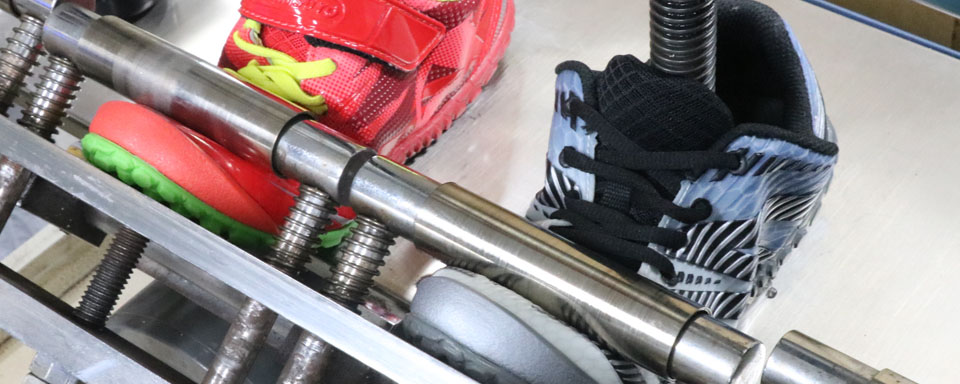
ASAHI's commitment
Quality control

From product design and development to products delivered, we strictly maintain and control quality as our commitment to high quality.
With a commitment to "manufacturing" that we have cultivated for more than 120 years of our history and to “Made in Japan” exclusive techniques for shoemaking, we will continue to provide shoes with a passion for manufacturing and assume responsibility for all processes and products. We maintain consistent quality through our own inventory control standards.
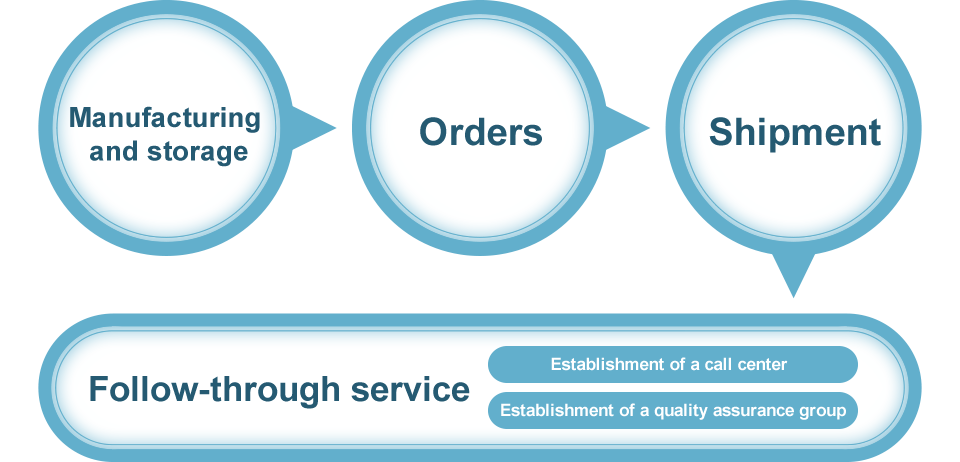
"ASAHI Quality" product manufacturing means checking with our "hands" and "eyes."
We are committed to “Made in Japan,” while striving not only to produce various shoes but also to review and improve production processes and to strictly check the durability and quality of each finished product. We concentrate on a multifaceted approach: activities to solve small problems and eliminate losses occurring in each process by staff on-site, strengthening of our technical departments through a review and examination of each material (rubber, leather, cloth, etc.,), an environmentally-minded approach associated with production, an approach to promote labor-savings and automation while improving quality. All of these activities are carried out by departments within the company, as well as through durability tests and physical property tests of materials.
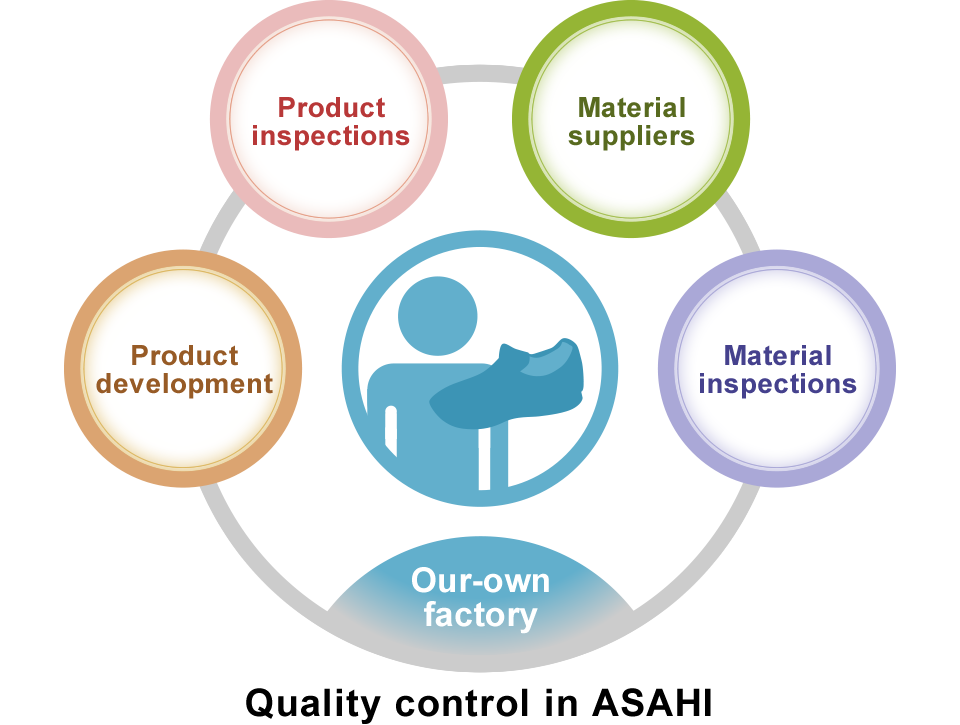
All kinds of tests are carried out on various kinds of materials during the product development phase.
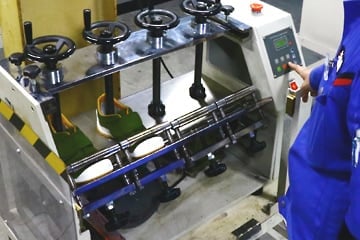
- Bending test
- Shoes are articles of clothing intended to be worn repeatedly. When walking, force is applied to the entire shoe, and this would lead easily to cracks if shoe durability was low.
In a bending test, we test each individual part of a shoe as well as the motion of each finished shoe in the same manner as walking to ensure that durability is satisfactory.
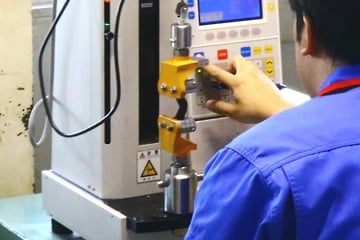
- Tensile test
- Pull the test material up and down and evaluate the force applied to it at the time of breakage or when the material is elongated to a specified value.
Results of the test are displayed in a graph and represent the strength of the material.
If the strength doesn’t meet the criterion, then the material cannot be used.
This tensile test should be carried out in different directions even when it is the same material.
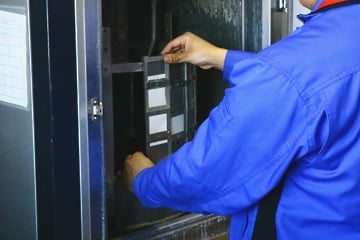
- Weathering test
- Shoes used outdoors are constantly exposed to natural phenomena such as ultraviolet rays and rain. In a weathering test, we evaluate durability against these factors.
Set the material of shoes on a machine intended for this test, apply ultraviolet rays and water to the material in order to generate conditions close to the natural environment, and evaluate discoloration and appearance.
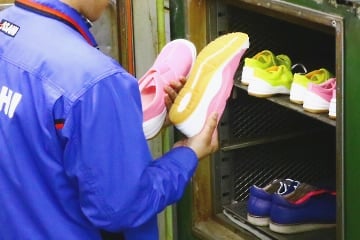
- Aging resistance test
- Shoes exposed to natural phenomena are affected by temperature changes.
In an aging resistance test, put the shoes in a testing machine in which heat is applied to the shoes for a certain period of time, and check if there is any change.
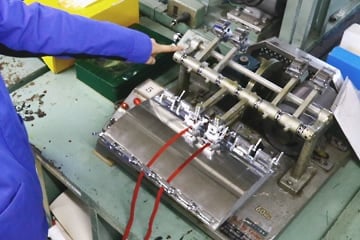
- Rubbing fastness test
- This test evaluates transfer of color when a colored material rubs against another material.
Set a white cloth on the top of the test machine and rub it against the material.
After rubbing a specified number of times, check for color transfer to the white cloth and the surface of the material.
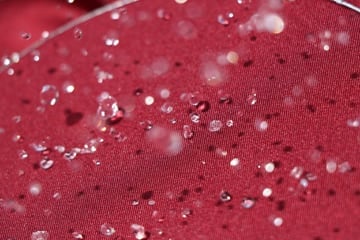
- Water repellency test
- In this test, we check if a test material becomes wet when water is applied.
Apply a specific amount of water to a test material (cloth) tensioned at the specified angle and check for its water repellency.